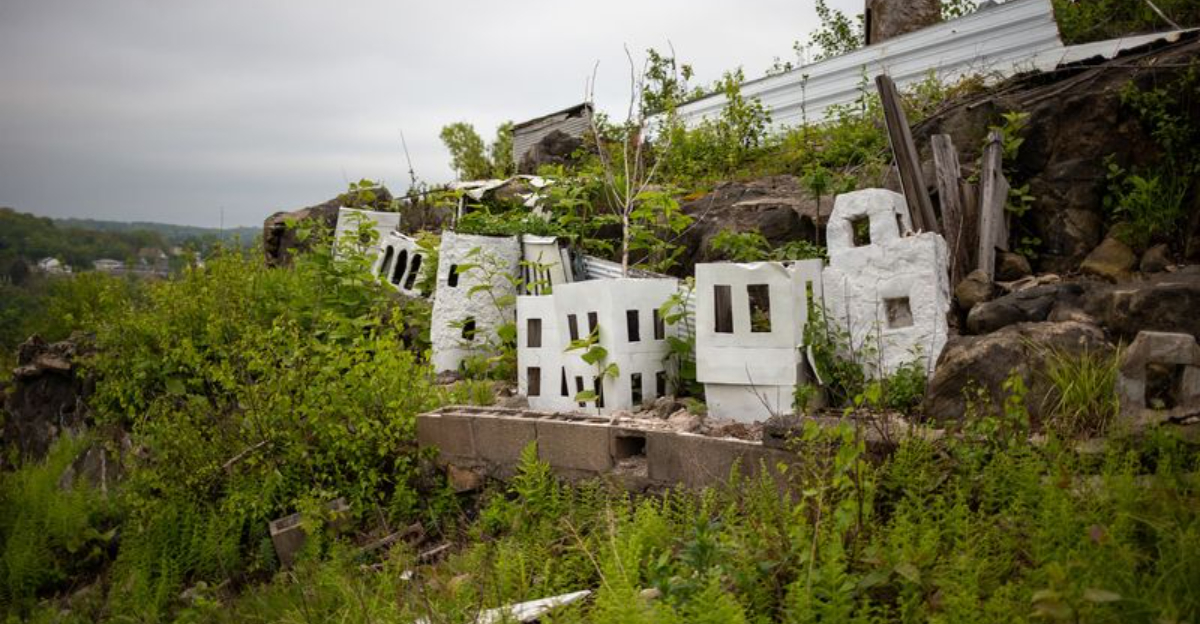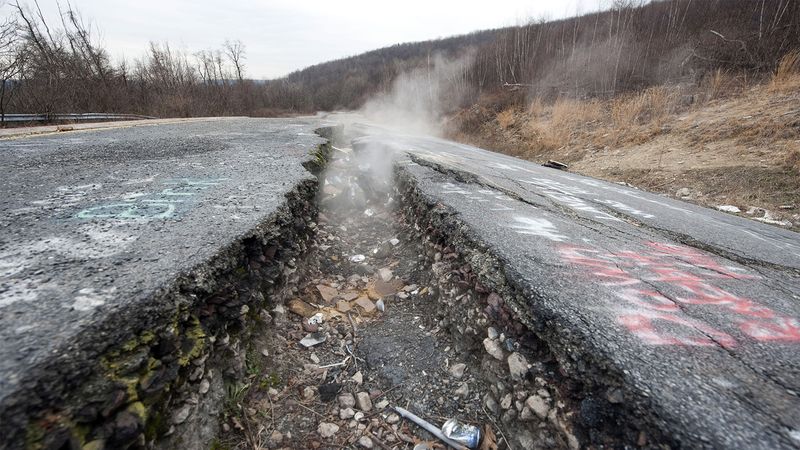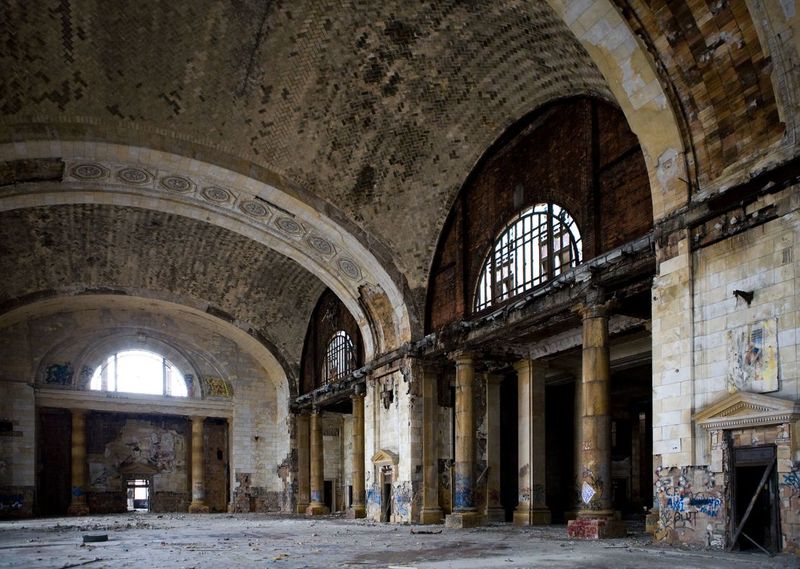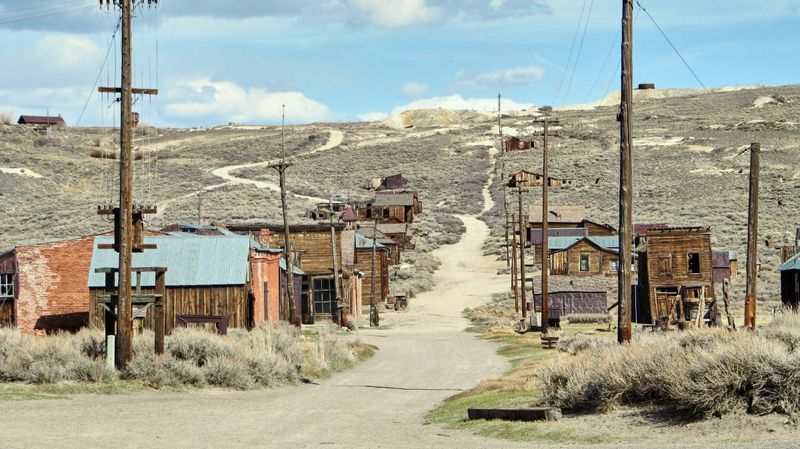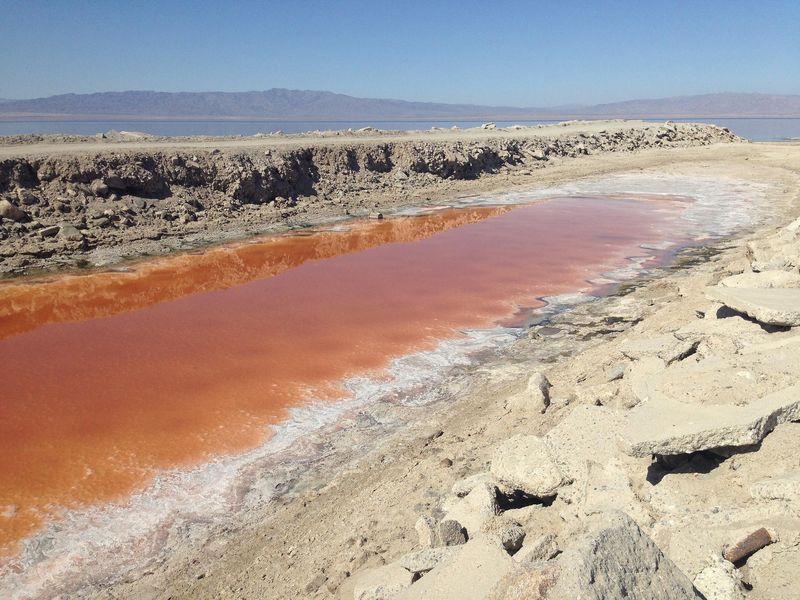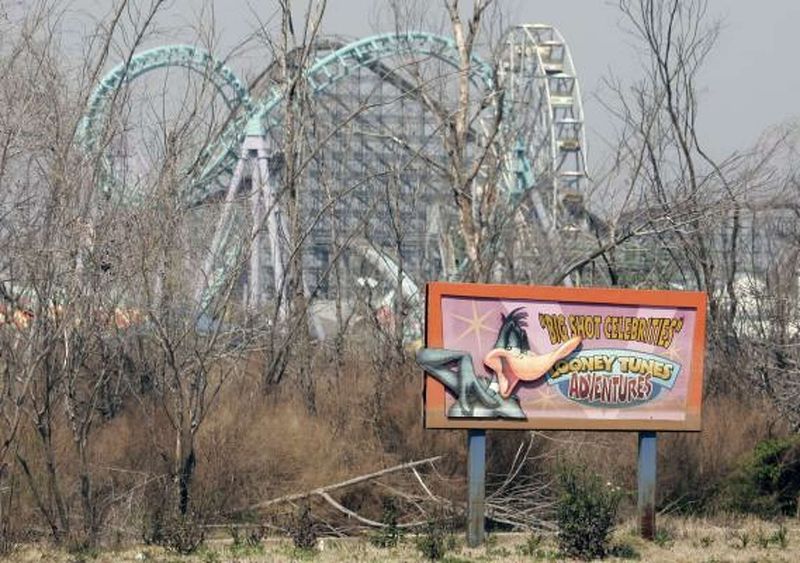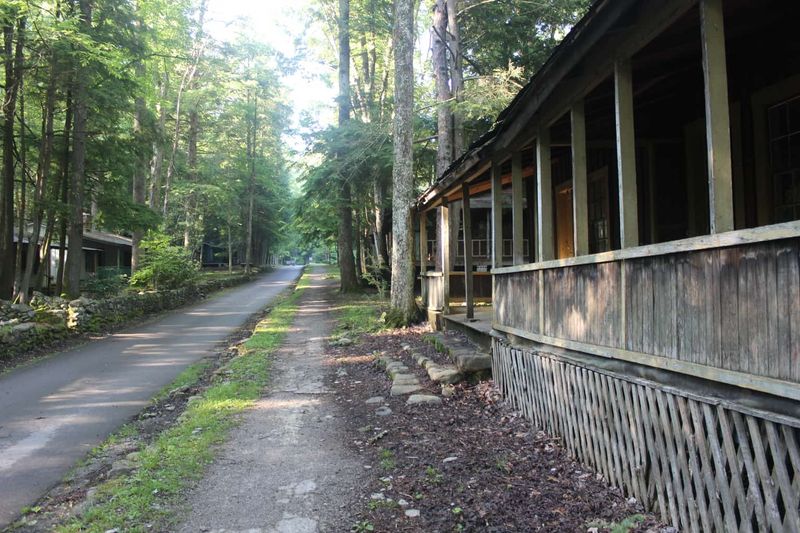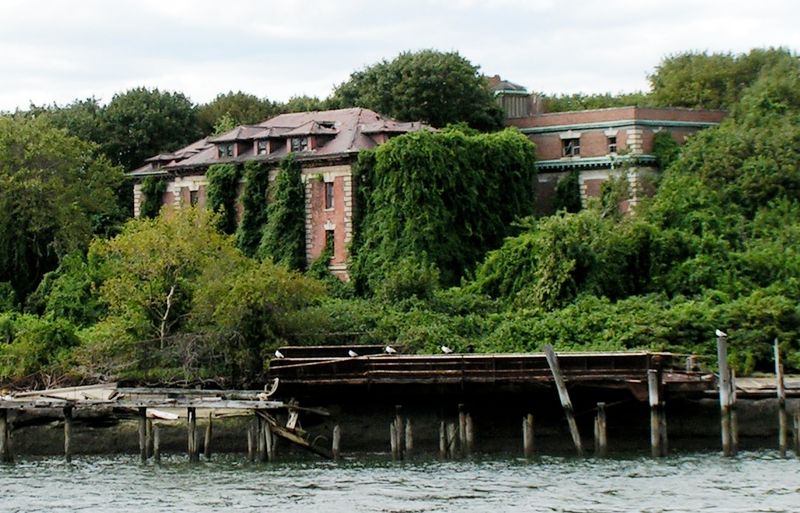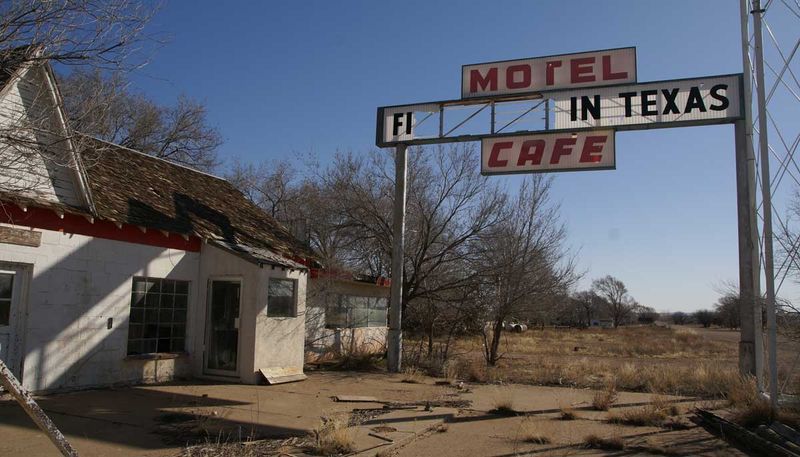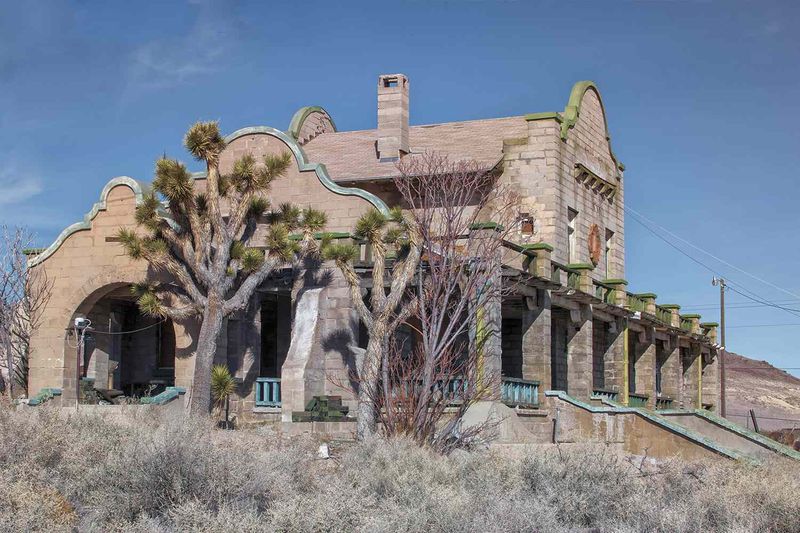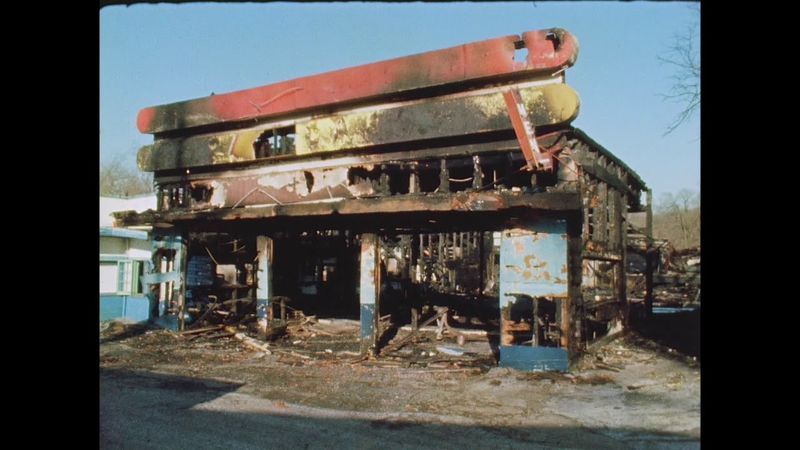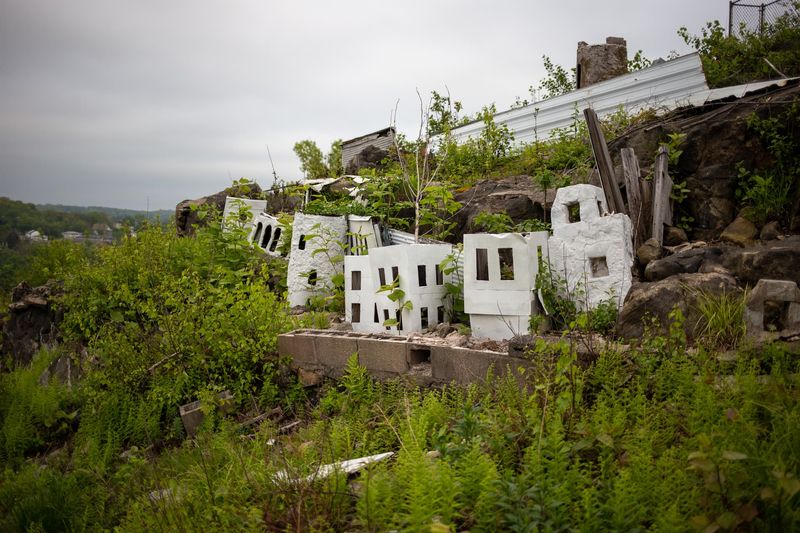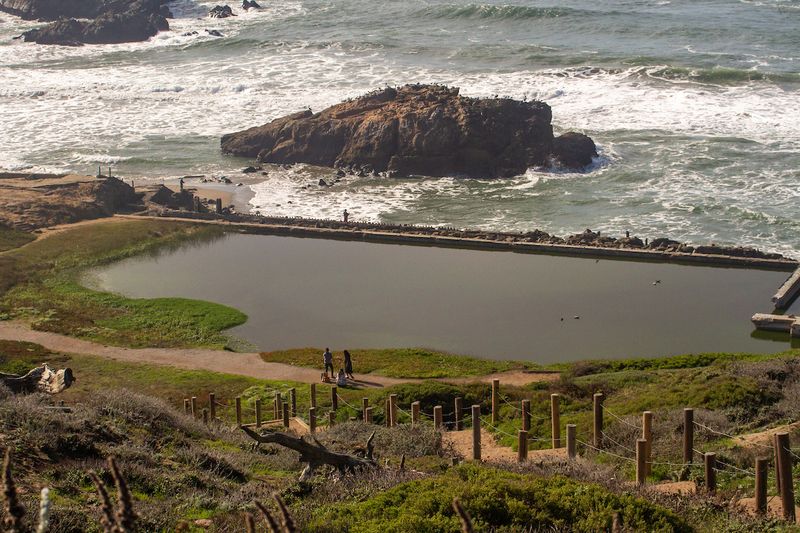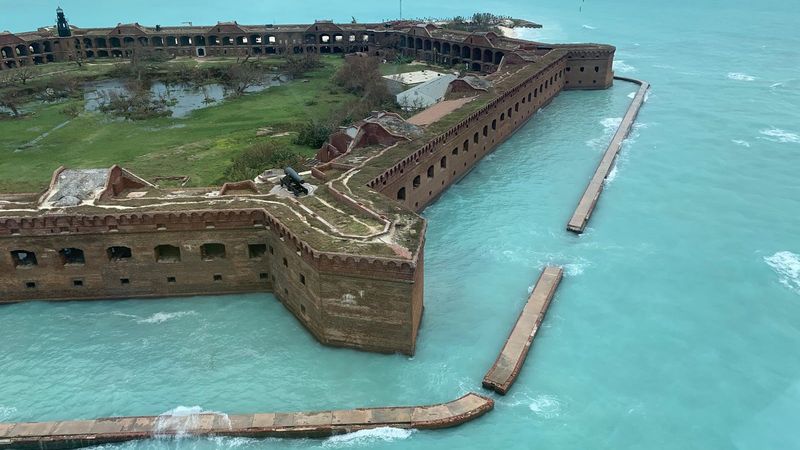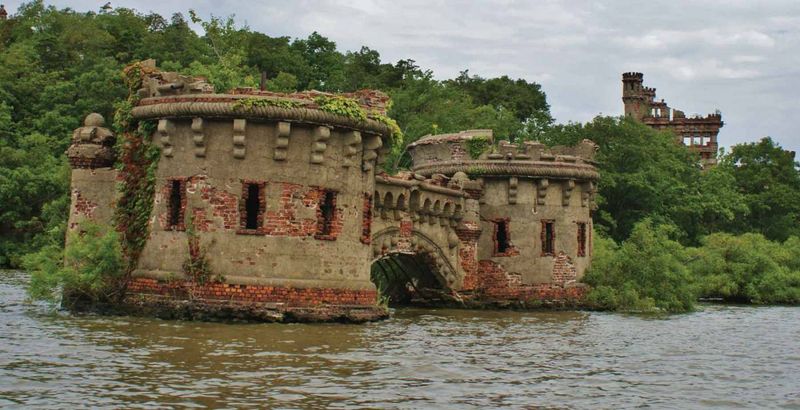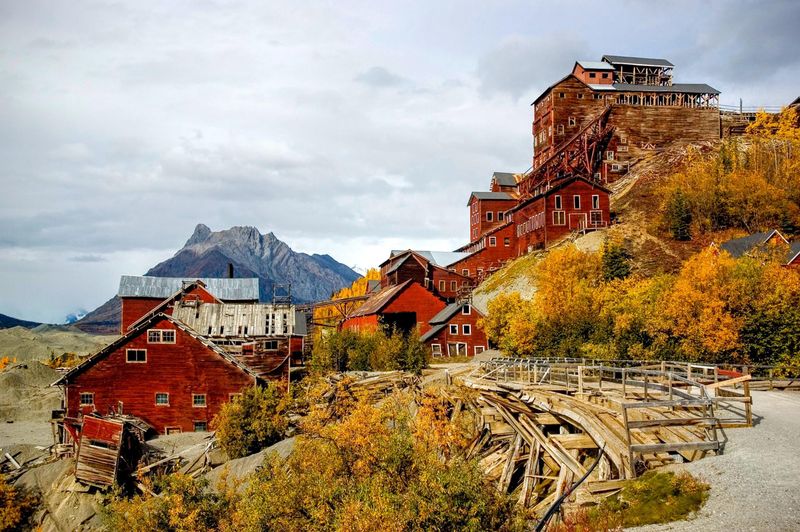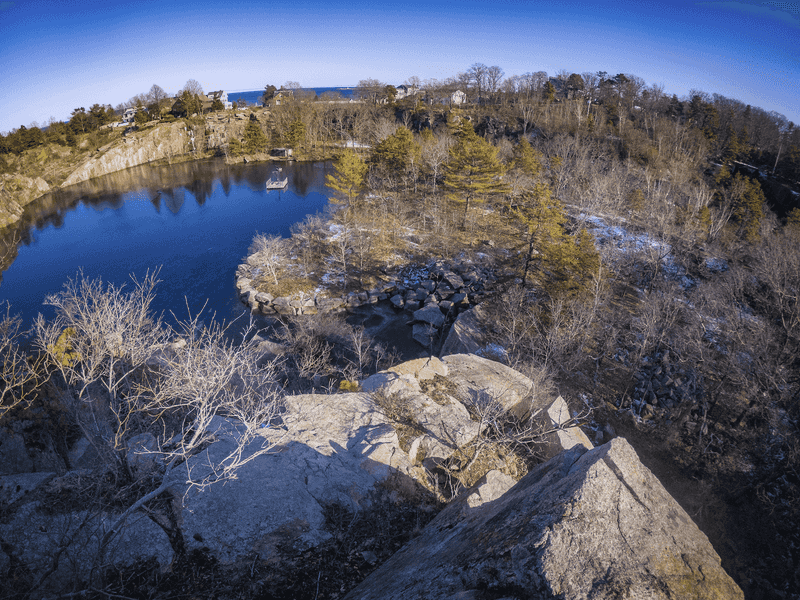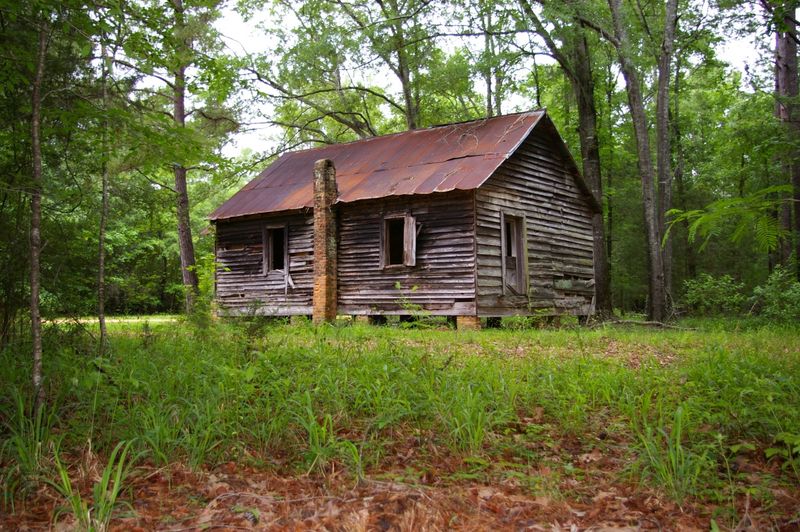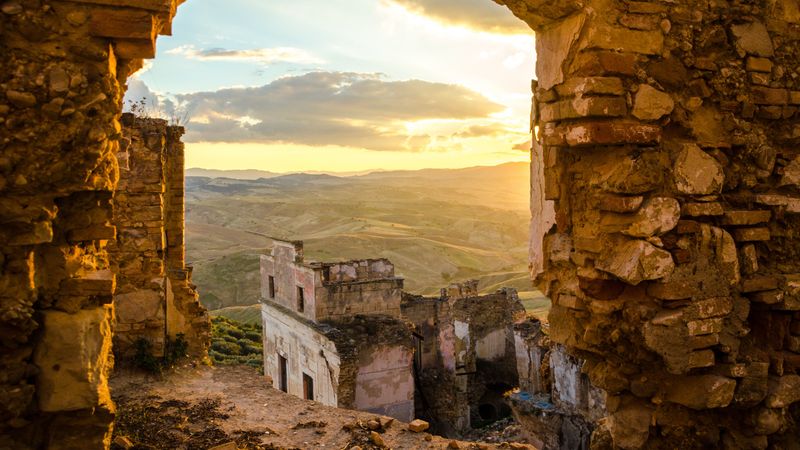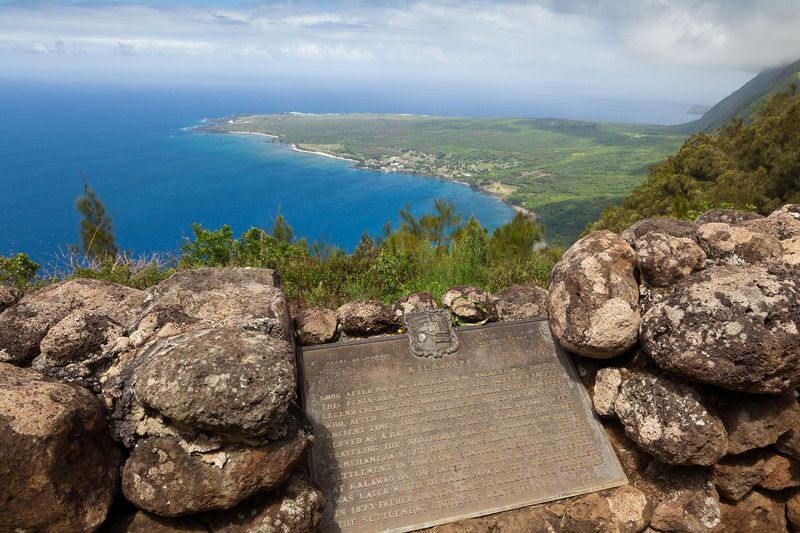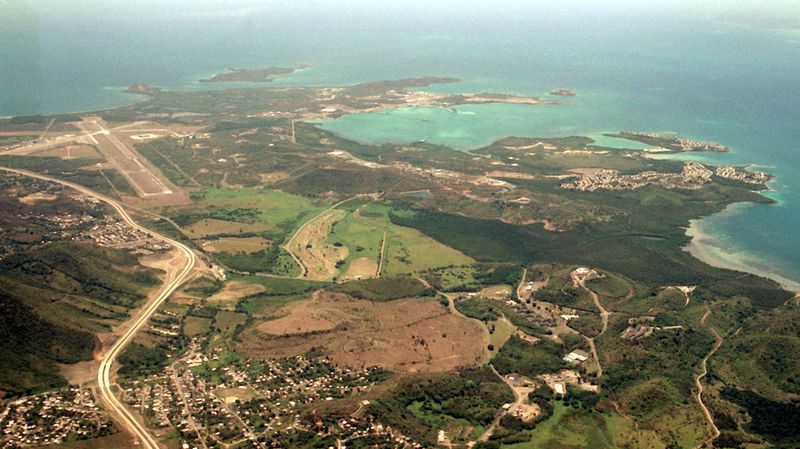Explore the fascinating world where nature has taken over abandoned places across the United States. These 21 locations tell stories of human history and the unstoppable force of nature, blending haunting beauty with a sense of mystery and wonder.
From ghost towns to deserted amusement parks, witness how flora and fauna have transformed these forgotten sites into mesmerizing spectacles.
1. Centralia, Pennsylvania
Centralia, Pennsylvania is a ghost town, where nature has seized control after an underground coal fire forced residents to evacuate decades ago.
Roads are cracked, and greenery pushes through the fissures, reclaiming the asphalt. Buildings, long abandoned, are shrouded in vines and moss, creating an eerie, post-apocalyptic aura.
Once home to a bustling community, silence now reigns, interrupted only by the rustle of leaves. The contrast between human decay and flourishing nature is stark, as if the earth is healing over its wounds. Centralia stands as a testament to nature’s resilience and dominance.
2. Michigan Central Station (Detroit, Michigan)
The Michigan Central Station in Detroit, Michigan is an emblem of forgotten grandeur. Once a bustling hub, it now lies silent, with ivy creeping up its towering walls. Wild grasses grow freely, softening the station’s imposing architecture.
Nature wraps the building in a verdant embrace, highlighting its decay while adding a touch of beauty.
This juxtaposition of human achievement and nature’s reclaiming power creates a melancholic yet captivating scene, drawing visitors into its storied past. The station is a poignant reminder of how time and nature can reshape even the most formidable structures.
3. Bodie, California
Bodie, California, once a thriving Gold Rush town, now sits quietly in the desert, its wooden structures frozen in time. Sagebrush and other desert flora have slowly begun to claim the land, creeping through the dusty streets and into the skeletal remains of buildings.
The stark desert landscape contrasts with the faded grandeur of Bodie’s past, offering a glimpse into a bygone era. Visitors to Bodie are greeted by the whispers of history, as the relentless desert sun casts long shadows over the resilient town that nature has begun to reclaim.
4. The Salton Sea (California)
Once a bustling resort destination, the Salton Sea in California has been transformed into a desolate wasteland. Buildings once alive with laughter now stand empty, buried under layers of salt and encroaching sand.
The harsh, sunlit landscape is a stark reminder of nature’s harsh reclamation process. Here, decay meets beauty, as the desolation creates a haunting yet mesmerizing tableau.
The Salton Sea’s transformation captures the inevitable cycle of nature reclaiming what was once hers, illustrating the fragile balance between human ambition and environmental forces.
5. Six Flags New Orleans (Louisiana)
Left in ruins after Hurricane Katrina, Six Flags New Orleans is a testament to nature’s power and resilience. Weeds now blanket the park, with rusting rides standing as haunting relics amidst the swampy vegetation.
The once vibrant laughter of families is replaced by the sound of wind rustling through overgrown foliage.
This eerie transformation invites curiosity and reflection, as the park becomes a living monument to nature’s ability to reclaim human-made environments. As nature takes over, Six Flags New Orleans becomes a surreal blend of nostalgia and wilderness.
6. Elkmont Ghost Town (Tennessee)
Nestled in the Great Smoky Mountains, Elkmont Ghost Town is an enchanting blend of history and nature’s tenacity. Abandoned cabins, remnants of a former logging community, are slowly being reclaimed by the forest.
Moss carpets the roofs, and trees grow intimately around and through the structures, creating a serene yet haunting atmosphere.
This peaceful invasion by nature adds an ethereal quality to Elkmont, as the forest quietly envelops the remnants of human habitation, whispering secrets of the past to those who wander through its verdant embrace.
7. North Brother Island (New York)
North Brother Island, off the coast of New York City, is a hidden gem where nature has woven its intricate tapestry over human history. The deserted quarantine hospital is overrun with vines, which snake up the crumbling walls, while trees force their way through rooftops.
Nestled amidst the calm waters of the East River, this island is a stark contrast to the bustling city that lies beyond. It is a sanctuary where nature’s quiet strength emerges, transforming decay into a hauntingly beautiful masterpiece.
North Brother Island invites exploration and introspection, revealing the delicate balance between civilization and nature.
8. Glenrio, Texas/New Mexico
Glenrio, straddling the Texas/New Mexico border, is a poignant reminder of America’s once-thriving Route 66 era, now a silent testament to change. Tumbleweeds roll through the streets, passing empty motels and gas stations, their signs faded by the relentless sun.
The vast, open sky frames this ghost town, casting long shadows over the silent remnants of a bygone era. Nature’s gradual takeover of Glenrio speaks to the impermanence of human endeavors, as the desert slowly reclaims its landscape, painting a picture of eerie beauty and timeless nostalgia.
9. Rhyolite, Nevada
Rhyolite, Nevada, a former mining boomtown, now lies in quiet decay, enveloped by the desert’s relentless embrace. Cactus and sagebrush weave through the crumbling ruins, painting a picture of stark beauty against the majestic desert backdrop.
The sun-baked remnants of the town offer a glimpse into the past, where nature’s silent reclamation speaks louder than words.
As the desert sands shift, Rhyolite becomes a canvas painted in earth tones, showcasing the inevitable return of nature’s dominance over human ambition in a mesmerizing spectacle.
10. Henry River Mill Village (North Carolina)
Henry River Mill Village, a once-thriving textile town, is now a haunting relic of history, overtaken by nature’s gentle persistence. Crumbling brick buildings stand amidst a sea of greenery, with vines and moss weaving through their skeletal frames.
Known for its role in ‘The Hunger Games,’ the village attracts visitors drawn to its cinematic allure. Here, nature’s reclamation adds a layer of mystery and wonder, transforming the village into a living tapestry of past and present.
Henry River Mill beckons explorers to witness the harmonious dance between decay and renewal.
11. Baltimore’s Gwynn Oak Amusement Park (Maryland)
Once filled with joy and laughter, Baltimore’s Gwynn Oak Amusement Park is now a serene woodland, where nature has taken over. Rusting rides lie hidden beneath a canopy of trees, their colors fading into the forest’s palette.
The whispers of the past echo through the rustling leaves, inviting visitors to uncover the stories entwined with the vines.
This peaceful transformation showcases nature’s gentle yet persistent reclaiming power, as the park becomes a sanctuary, blending nostalgia with the beauty of renewal.
12. Holy Land USA (Connecticut)
Holy Land USA, once a bustling Christian theme park in Connecticut, now stands as a silent monument to nature’s irresistible force. Moss-covered biblical statues crumble under the weight of time, while wild vegetation cloaks the landscape.
The serene yet haunting atmosphere invites reflection on the passage of time and nature’s unyielding persistence.
Visitors to Holy Land USA are greeted by the stark contrast between faith’s architectural embodiments and the earth’s quiet reclamation, offering a poignant exploration of human endeavors and nature’s enduring influence.
13. The Sutro Baths (San Francisco, California)
The Sutro Baths in San Francisco, once a luxurious retreat, now lie in captivating ruins where the Pacific Ocean and nature converge. Waves crash against the remnants of the public bathhouse, while plants weave through the crumbling structures.
This hauntingly beautiful scene invites visitors to ponder the interplay of nature and human ingenuity. The baths, now part of the landscape, illustrate nature’s power to reclaim and transform, offering a mesmerizing tableau of resilience and rebirth. The Sutro Baths stand as a testament to the enduring beauty of nature’s reclamation.
14. Fort Jefferson (Dry Tortugas, Florida)
Fort Jefferson, nestled in the Dry Tortugas, is a relic of the past slowly being overtaken by the surrounding ocean. Coral and seaweed find their place on the fort’s weathered walls, merging history with the vibrant marine ecosystem.
The fort’s isolation in the azure waters highlights nature’s ability to reclaim and transform human structures.
This harmonious blend of history and nature invites explorers to witness the fort’s quiet surrender to the ocean’s embrace, creating a sanctuary where the past meets the present in a dance of resilience and serenity.
15. Bannerman Castle (New York)
Bannerman Castle, perched on the Hudson River, is a decaying fortress where nature has woven its intricate patterns. Ivy and wildflowers intertwine with the castle’s stone walls, softening its once-imposing facade.
The castle’s ruins tell stories of times long past, offering a romantic yet melancholic glimpse into history. Visitors are drawn to the enchanting interplay of decay and renewal, as nature’s artistry transforms the castle into a living canvas.
Bannerman Castle invites exploration and reflection, where beauty emerges from the dance between man-made structures and nature’s gentle reclamation.
16. Kennecott, Alaska
Kennecott, Alaska, once a bustling mining town, now stands frozen in time amidst a landscape dominated by snow and glaciers. Wooden buildings, weathered by harsh winters, are slowly being enveloped by the advancing ice.
The stark beauty of this frozen tableau speaks to nature’s unyielding power, as it reclaims the remnants of human activity.
Visitors to Kennecott are greeted by the pristine silence of the Alaskan wilderness, where history and nature coexist in a breathtaking display of resilience and transformation. The town stands as a testament to nature’s quiet dominance.
17. Rockport, Massachusetts Quarry Ruins
In Rockport, Massachusetts, a flooded quarry hides a world where nature flourishes amidst stone ruins. Trees grow inside these remnants, their roots finding purchase in the unlikely environment.
The serene waters reflect the sky, adding a layer of tranquility to the scene. This unique landscape showcases nature’s adaptability, as life takes hold in unexpected places. Visitors to the quarry are treated to a harmonious blend of water, stone, and foliage, illustrating the quiet strength of nature’s reclamation and the beauty of renewal.
18. Old Cahawba, Alabama
Old Cahawba, Alabama, a forgotten ghost town, is where history and nature intertwine amidst the overgrowth of Southern greenery. Collapsing homes and ancient graveyards are draped in vines and moss, creating an atmosphere of eerie beauty.
The whispers of history linger in the humid air, inviting visitors to explore the layered stories hidden beneath the verdant canopy. Old Cahawba stands as a testament to nature’s gentle but relentless reclamation, where the past is embraced by the earth, creating a living tapestry of decay and renewal.
19. Craco, Texas
Craco, Texas, a deserted settlement, is a hauntingly beautiful landscape where wildflowers and prairie grass flourish. The empty brick buildings stand in silent testament to the passage of time, with nature quietly reclaiming the spaces once filled with human life.
The wide, open sky frames this tableau, adding to the sense of vastness and solitude. Craco’s transformation is a poignant reminder of nature’s enduring presence and the ephemeral nature of human endeavors, as life begins anew amidst the ruins, painting a vibrant picture of resilience and beauty.
20. Molokai, Hawaii (Kalaupapa)
On Molokai, Hawaii, the abandoned leper colony of Kalaupapa is a testament to nature’s exuberant reclamation. Towering palms and lush jungle overrun the empty homes, creating a vibrant tapestry of life and history.
The tropical landscape offers a serene yet haunting beauty, inviting visitors to reflect on the stories of those who once lived there.
Kalaupapa’s transformation into a living jungle illustrates the unstoppable force of nature, as it seizes every opportunity to flourish and reclaim, blending past and present into a lush, harmonious tableau.
21. Roosevelt Roads Naval Station (Puerto Rico – U.S. Territory)
Roosevelt Roads Naval Station in Puerto Rico, once a bustling military hub, now lies silent, overtaken by nature’s vibrant embrace. Vines weave through the military barracks, while wildlife roams freely amidst tropical vegetation.
The juxtaposition of human structures and nature’s exuberance creates a dynamic landscape, inviting exploration and reflection.
This transformation highlights nature’s relentless ability to reclaim and renew, turning a once-structured environment into a thriving ecosystem. Roosevelt Roads stands as a testament to the enduring power of nature’s resilience, offering a sanctuary where the past and present coexist.
